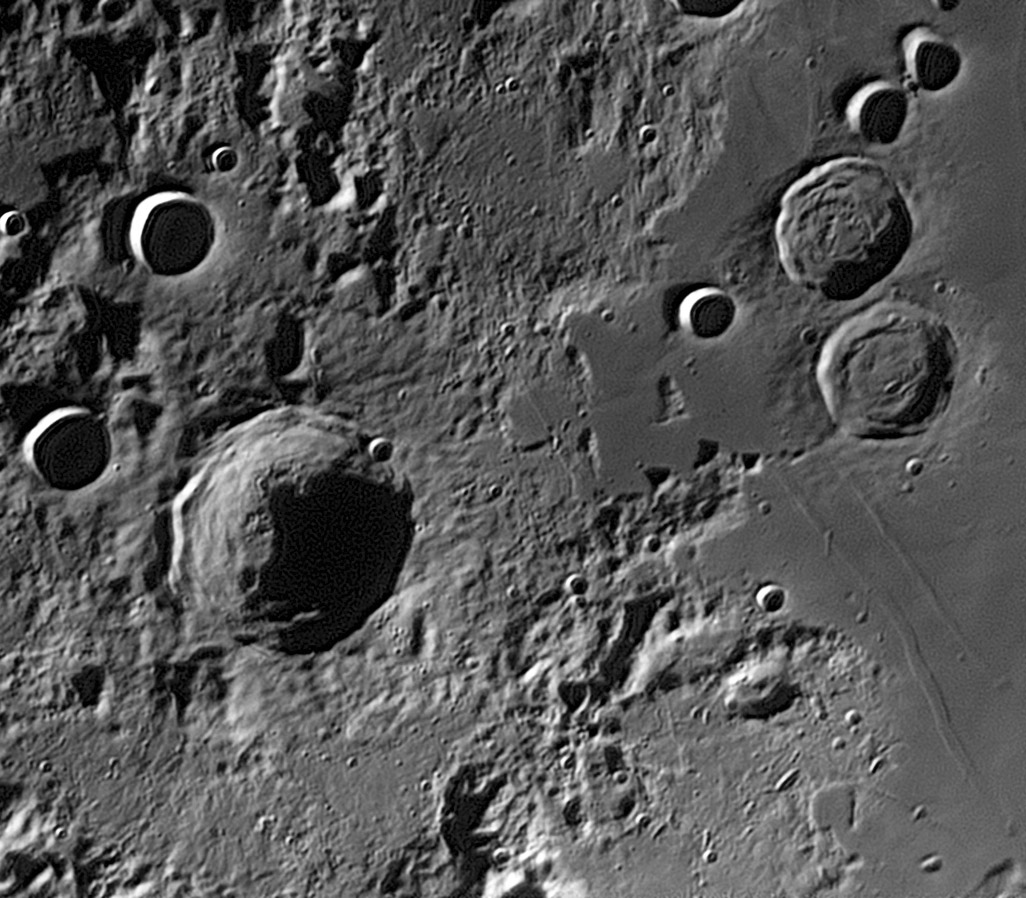August 30, 2023
Younger? Older?
Originally published August 15, 2013

north to the upper right image by Leo Aerts, Belgium
Sabine and Ritter are a pair, like Atlas and Hercules, and Aristoteles and Eudoxus. These are all separate craters but because for each set
the two are near each other and look somewhat similar they always get considered together. Sabine - at center right- and Ritter - just above
Sabine - do look similar in diameter, general degree of erosion, and concentric inner structure. With nearby Delambre (half-shadowed) as a
reminder of what a complex impact crater should look like, Sabine and Ritter don't fit. They were considered likely volcanic craters by some
lunar scientists in the 1960s and 70s. But then in 1976 Peter Schultz recognized such inner-ringed craters as a class of modified impact crater
called floor-fractured craters (FFC), and the volcanic camp disappeared. Sabine has relatively little on its floor except a broad ring, reminiscent
of concentric craters. Ritter's interior is more complex with a broad wreath of hilly terrain, obviously buttressed by debris that slid down its
crater walls, and three or possibly four rilles wiggle through the wreath. Ritter could almost not be a FFC but simply a crater with heavy wall
slumps that circle its floor. Sabine seems harder to explain that way. Notice also the relation of these craters to the mare. The craters cover
some of the broad-floor rilles that run both below and above them showing that the craters are younger than the rille. But the ejecta from
Sabine and Ritter are covered by the mare lavas, indicating that the craters are younger than the lavas. What do you think?
Chuck Wood
Technical Details
March 18th 2013, 18h25 UT. C14, 1.8x barlow projection and redfilter. I used a DMK31AU03 webcam.
Related Links
21st Century Atlas chart 7.
Yesterday's LPOD: Rimae Fantasticus
Tomorrow's LPOD: A Linear Barrage
COMMENTS?
Register, Log in, and join in the comments.



